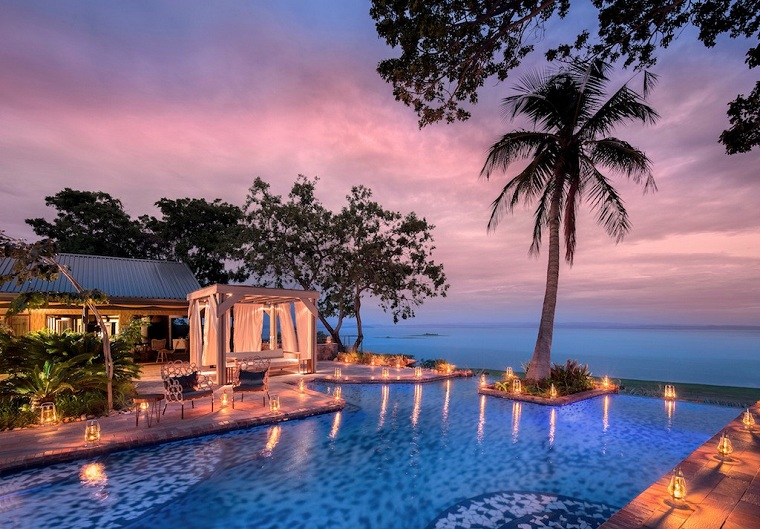One morning, we pulled up to a herd in a sun-dappled clearing shaded by apple-ring acacias, whose seed pods help elephants survive during the long dry season.
(Zimbabwe is presently suffering its worst drought since 1992, and Mana Pools has been one of the areas hardest hit; in the past two months, well over 100 of the country’s elephants have died as a result.)
We were perusing the peaceful scene when Stretch grasped my arm firmly and began marching me in the direction of a grazing bull with magnificent tusks, ignoring my repeated pleas of, “No, I’m good—I’ll just stay here, thanks!”
When we were even with the elephant, still a healthy distance to our right, we turned sharply and proceeded slowly toward him; Stretch quietly told me to sit down at the base of the tree under which stood our new friend, some 15 feet away.
The bull advanced warily, training one long-lashed eye on us as I held my breath, then returned to scooping up seedpods with his trunk. “See, we’ve just established our territory, and he respects that,” Stretch whispered before striding back to the group, leaving me in silence and awe.
Encompassing nearly 6 000 square miles in the country’s northwest, Hwange National Park, Zimbabwe’s largest natural reserve, boasts a profusion of wildlife—including some 50 000 elephants and one of Africa’s largest wild dog populations—and highly varied terrain ranging from desert dunes to mopane woodlands.
Having opened last May, Deteema Springs Camp, one of the latest additions to the Machaba Safaris portfolio, offers both a new gateway to the park’s relatively unexplored northern region and a level of hospitality on par with Africa’s very best safari camps.
Deteema’s awe-inspiring setting verges on the indescribable: Its eight en-suite tents overlook an IMAX-like panorama of the surrounding wilderness, frequented by elephant, lion, and a slew of other wildlife. Elephants loom especially large here.
For sundowners our first evening, we were spirited a five-minute drive away to the neighboring Deteema Dam, where, as if cued by the descending dusk, some 30 pachyderms paraded down the far hill to drink at the water’s edge in the pink-hued twilight.
We began one day with a walking safari led by Sam Mushandu, considered one of Zimbabwe’s most talented guides. Setting off across the hills under a cloudless sky, we glimpsed giraffe—often called “Africa’s constant gardeners”—nibbling daintily on acacia trees, and listened as baboons shrieked in the distance to warn others of nearby lion, whose fierce, reverberating roar had awoken us before dawn.
Continued next page
(230 VIEWS)


